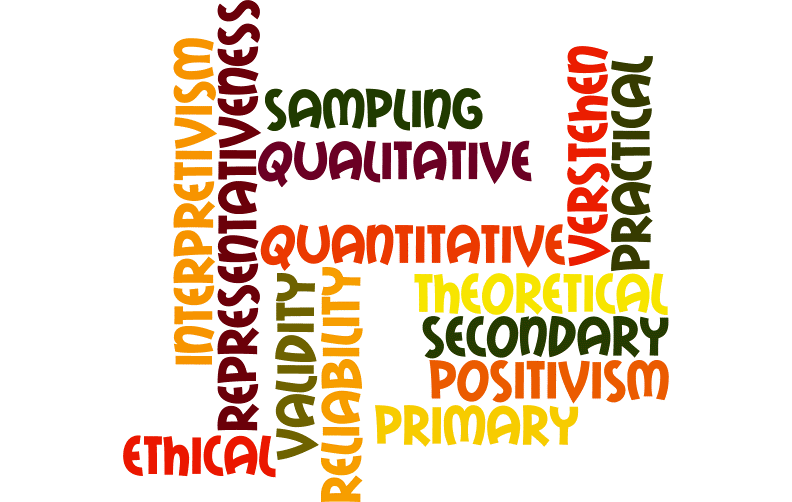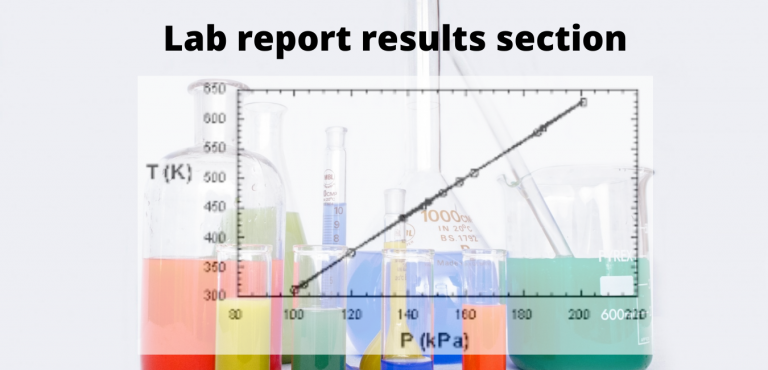Research Terms you Should Know
To understand research as a subject, you need to get familiar with the terms used in it. There are thousands of terminologies in research, but we’ll address some of the main ones in this article.
Some Research Terminologies you Need to Know
General research terms
- Qualitative research-It is a type of research that is generally less strict and does not involve quantitative data. It describes in detail the characteristics, thoughts, motivations, etc.
- Quantitative research– It is a type of study that involves collecting numerical data, which allows researchers to draw inferences about as many people as possible.
- Correlation- Correlation refers to the degree of association between two quantities.
- Quality research- It is a type of research that follows strict guidelines and procedures.
- Ethical review- It refers to a process in which an ethical committee examines the details of a research proposal. This committee decides whether or not the proposal is ethical.
- Research ethics- It refers to the rules and regulations that govern the activities surrounding research.
- Interval variables- These are the variables that can be ranked.
- Research project- It is a study that investigates one particular topic, and it is carried out over a limited amount of time.
- Scientific method- It refers to the step-by-step approach towards finding an answer to a particular problem.
- Empirical research- It is a type of research that is based on observation and experience.
- Research proposal- It is a document in which research aims and objectives are described.
- Theoretical framework- It is a set of theories that serve as a conceptual map for research.
- Concept- A concept is something that can be thought of and expressed through words or other symbols.
- Conceptual definition- It is a statement that defines the meaning of a concept.
- Purpose- It refers to the intention behind carrying out research.
- Literature review- It is a review of the existing literature on a specific topic.
- Hypothesis- It is the provisional claim that two variables are related to each other.
- Null hypothesis- It is the statement that there is no relationship between two or more variables.
- Alternative hypothesis- It is the statement that there is a relationship between two or more variables.
- Causation- It refers to the fact that an independent variable affects a dependent variable.
- Qualitative researcher- This is the person conducting qualitative research.
- A quantitative researcher- is the person who uses numbers and statistics to derive meaning from data.
- Methodology- It refers to the methods used in a research study.
- The three-point Likert scale- is a psychometric scale that consists of three points along a continuum, with neutral in the middle and positive and negative ends.
- Semantics- The meaning of words or symbols that are used to convey information.
- Ethnography- is a research method used to describe and interpret the culture or subculture of a group or community.
- Probability- It is the chance that something will occur.
- Inductive reasoning- is an approach to research that involves starting with specific observations and generalizing to theories about them.
- Factor analysis- A statistical method used to identify underlying factors in a set of observed variables.
- Ethnocentrism- is a term used to describe the tendency to use one’s cultural standards when making judgments about other people’s cultures.
- Ontology- It is the study of what exists.
- Epistemology- It refers to what it is possible to know.
- Feminist research- It is a type of research that aims to produce valuable knowledge for women in their struggles against sexism.
- Confounding variable- It is a variable that forms part of the causal pathway between two other variables, so its effects cannot be separated from the independent variable.
- Web of science- It is an online scientific citation index that provides access to multiple databases of bibliographic information.


Research terms for data collection
- Sample- It refers to a set of individuals selected from a larger group based on certain criteria.
- Randomly- A random sample is a particular type chosen due to certain specific characteristics.
- Questionnaire- It is a set of questions posed to the individuals involved in a study.
- Independent variable- It is used in experiments, where one variable causes the change in the other.
- Dependent variable- It is the variable that changes when another one is changed.
- Likert scale- It is an experimental research method in which measures are taken on a series of statements. Also, participants must choose one of the options provided.
- Target population- It is the group of individuals that are being studied.
- Control group- It is the group of individuals who do not receive the treatment.
- Reference- A reference is a type of document that provides information or data on a specific topic. It can be a book, journal article, or website.
- Data collection- It is a systematic, detailed, and enthusiastic approach to finding information.
- Data quality- It refers to the suitability of various variables for being used in research.
- Experimental group- It is the group of individuals who receive an experimental treatment.
- Research methods-these are the techniques used to investigate the subject of research.
- Sample size- It refers to the number of participants that are involved in a study.
- Survey- It is a quantitative research method that involves asking questions to a set of individuals.
- Survey instrument- It is the questionnaire used in a survey.
- Source credibility- It refers to how much a reader thinks that a source is reliable.
- Survey design- It refers to the process of designing the research instrument that will be used in a survey.
- Cross-sectional study- It is a type of research that is carried out at one particular time point.
- Research participants- These are the people who take part in the research.
- Longitudinal study- It is a type of research that involves repeated observations at different time points or for an extended period.
- Population- It refers to the group that one wants to study.
- Cluster sampling- It is a type of probability sampling that involves taking samples from different groups.
- Simple random sampling- A type of probability sampling that involves randomly selecting every object in the population.
- Purposive sampling- It is a kind of probability sampling that involves using information available to decide which objects should be included in the study.
- Strata- They are broad groups that can be used to separate a certain population.
- Nonprobability sampling- It is a type of probability sampling that does not involve randomly selecting participants.
- Non-response bias- It’s the situation where there’s a difference between people included in a study and those who were excluded. This formula is used for comparison purposes.
- Convenience sampling- It is a type of non-probability sampling that involves using available participants.
- Snowball sampling- A type of nonprobability sampling that involves recruiting participants who, in turn, can recruit other participants.
- Sampling bias- It is the difference between the sample and the population.
- Non-response error- It is information that can be collected from people who choose not to respond to a survey.
- Experimental study- It is a research design where participants are randomly assigned to different experimental conditions.
- Ex Post Facto design- is a type of experimental design where participants are assigned to conditions based on their scores at the end of an independent variable (e.g., pretest).
- Longitudinal design- It’s a research design where a group of participants is assessed repeatedly over a long period of time.
- Prevalence- It is the percentage of individuals in a population that has a particular characteristic.
- An observational study-It is a research design where participants act naturally in their environment, and researchers can’t manipulate the independent variable.
- Experimental confound- It occurs when two variables are manipulated together by the researcher. For example, in an experiment investigating whether watching violence on TV is related to aggression, the researcher manipulates the amount of TV violence participants watch and whether they see an aggressive or non-aggressive video.
- Nonverbal communication- It is communication through the use of facial expressions, bodily gestures, and other nonverbal cues.
- A non-reactive measure- is a measure that is not affected by the person being measured.
- Psychological reactance- The emotional response to a perceived threat to one’s freedom of choice or action.
- Group behavior- is the idea that people will change their behavior when they know they are being observed.
- Self-report data-This is collected by asking participants for their opinions, feelings, and behaviors.
- Inter-rater reliability- is a measure of the extent to which different raters agree with each other. This agreement is measured in terms of their ratings of a particular research participant.
- Matched guise technique- This is a research method used to investigate people’s behavior in different situations. In this method, participants are randomly assigned to adopt a different persona or role.
- Semi-structured interview- It’s an unstructured interview with a list of topics to be covered but allows for additional material.
- Panel study- A longitudinal study that involves taking a sample and measuring their variables of interest over time. It also involves following the participants up to see if there have been any changes in their scores.
- Field study- A study that involves investigating a phenomenon as it occurs in the natural setting.
- Experimenter effects- Occur when the researcher creates an unnatural and artificial research environment that affects the participants’ behavior.
- Secondary data- It is originally collected for some purpose other than the one under investigation.
- Mortality- A type of research data in which all of the participants in a study die.
- Cohort- A group of participants that share a common characteristic or experience at the same time.
- Primary data- It refers to the data that are collected for the first time.
- Convenience sample- A type of non-probability sampling that involves taking a group for whom accessibility is convenient.
- Probability sample- is a sample based on random selection.
- Non-response bias- refers to the possibility that the people who do not complete the questionnaires are different from those who agree to participate.
- Endorsement effect- participants tend to agree with items on scales they complete, even when they don’t fully believe in them.
- Campus effect- This is the tendency of individuals on campuses to be more liberal due to their age, ethnicity, politics, and academic experience.
- Maturation- It is a form of confounding that occurs when participants change over time.
- Vulnerable research participants- include people who cannot give consent, such as children or cognitively impaired adults.
- Demand characteristics- It is the effect that occurs when participants act in a particular way because they believe it is expected. This acting can affect the validity of an experiment.
- Social desirability bias- Respondents tend to avoid answering questions in ways that they feel are socially undesirable.
Data analysis research terms


- Data analysis- It is a process of examining and presenting data so that the reader can easily understand it.
- Data mining- is the process of finding patterns in data that the researcher did not explicitly state.
- Statistical analysis- It is a procedure in which numerical data are studied, and patterns in the results are searched.
- Analysis of Variance is a statistical test that is used for assessing variations in a dependent variable. This test assesses whether the variations can be explained by more than one categorical independent variable.
- Analysis of Covariance- It is a statistical test used for assessing variations in a dependent variable. This test assesses whether or not the variations can be explained by more than one continuous independent variable.
- Chi-square test- It is a statistical test that is used for assessing variations in categorical data. This test assesses whether there is a relationship between two categorical variables.
- The Chi-square test statistic- The chi-square test statistic consists of the sum of the squared deviations from the expected numbers in each category.
- Paired-sample t-test- This is a statistical test that is used for assessing variations in the means of two related samples. The paired-sample t-test statistic is used to assess whether there is a difference between the means of normally distributed variables
- Multiple regression- is a statistical procedure used for assessing the linear relationship between multiple independent variables and one dependent variable.
- Unsystematic variance- is the difference in the scores you get because of differences between participants or other individual characteristics.
- Causal relationship- It refers to the fact that an independent variable affects a dependent variable.
- Systematic variance- is the difference in the scores you get because of differences between participants or other individual characteristics.
- Meta-analysis- is a statistical procedure that involves using the results from different studies and combining them.
- Heterogeneity of variance- is the difference in the scores you get because of differences between participants or other individual characteristics.
Are you wondering, “Can I pay someone to write my research paper?” The answer is yes! Chat us at the bottom-left to get a custom quote!
Research results terms


- Level of significance- It refers to the degree to which results are statistically significant.
- Statistical test- It is used to determine whether or not the results of an experiment are statistically significant.
- Research findings- These are the results of the research.
- Validity- It refers to the extent to which research findings are correct.
- External validity- It refers to the extent to which results can be generalized.
- Internal validity- It refers to the extent to which the experiment was carried out correctly, and no confounding variables were present.
- Construct validity- It is a characteristic of research that indicates whether you have measured what you think you have measured.
- Effect size- the size of a research result, specifically about the effect of an independent variable on a dependent variable.
- Confidence interval- It is an interval estimate for a population parameter; it can be used to make claims about the accuracy of the results.
- Publication bias- is the phenomenon where only positive and significant results get published. Researchers and scientists do this to avoid the effort or time in finding and reporting on negative outcomes.
- Reliability- It is whether an instrument, test, etc., produces consistent results.
- Ecological validity- refers to the extent to which research results can be generalized from a lab or other artificial setting to people’s everyday lives.
- Structural validity- is a characteristic of research that indicates whether the inferences you can make from your data are correct.
- Predictive validity- is a characteristic of research that indicates whether the results accurately predict participants’ scores on a criterion variable.
Bottom Line
The terms listed in this article are just a few of the many found in this branch of science. All of these terms are vital to understanding the nuances and concepts that surround research.


I‘m a freelance content and SEO writer with a passion for finding the perfect combination of words to capture attention and express a message. I create catchy, SEO-friendly content for websites, blogs, articles, and social media. My experience spans many industries, including health and wellness, technology, education, business, and lifestyle. My clients appreciate my ability to craft compelling stories that engage their target audience, but also help to improve their website’s search engine rankings. I’m also an avid learner and stay up to date on the latest SEO trends. I enjoy exploring new places and reading up on the latest marketing and SEO strategies in my free time.







